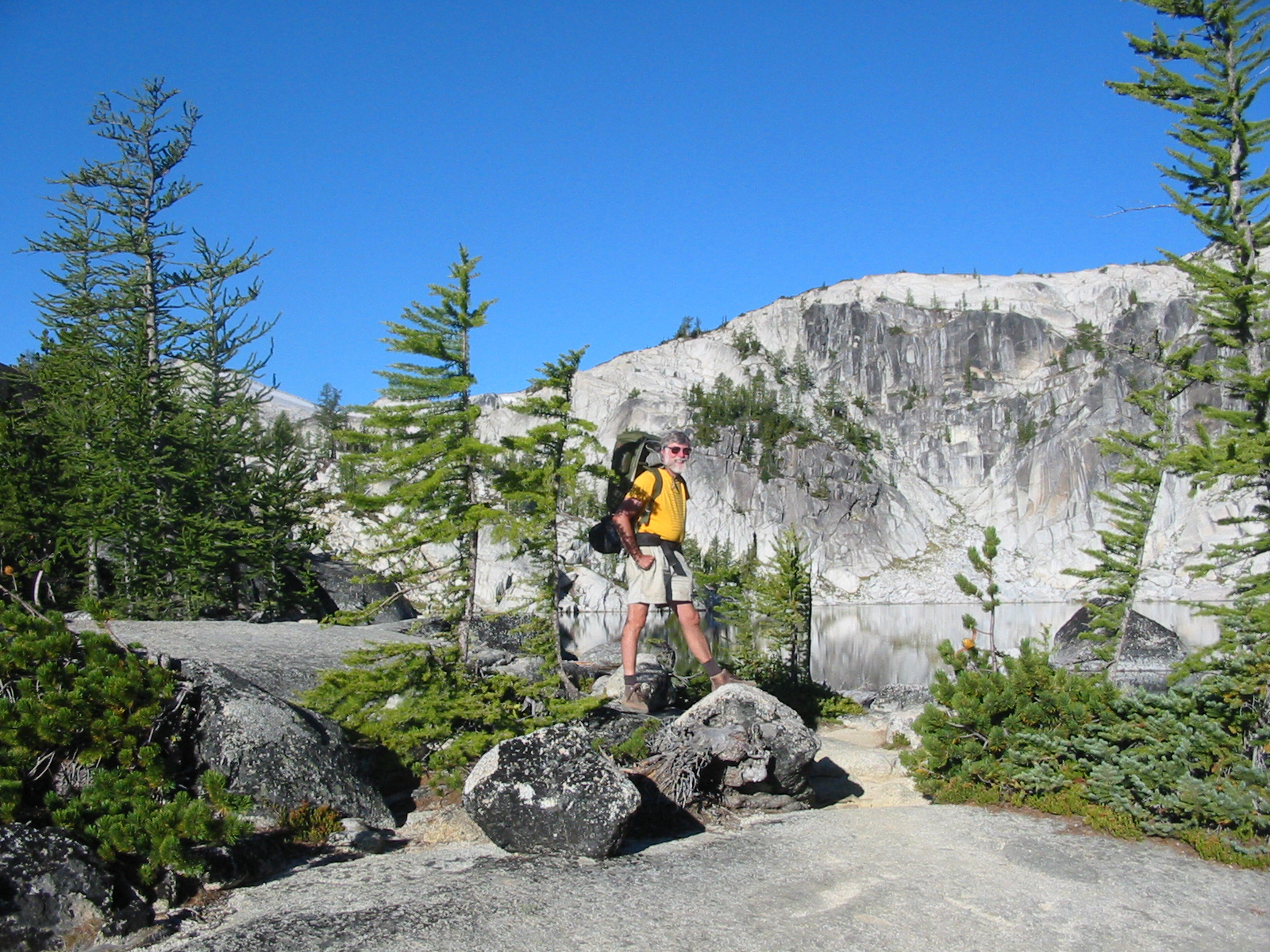
By Mariska Kecskes | Wyss Fellow Associate Organizer
With spring in the air and the weight of a heavy winter slowly lifting, it is time to start daydreaming about (safely) exploring our favorite outdoors spaces once more. While we have so many amazing public lands in our region, it can be easy to take these wild spaces— and the work it takes to keep these spaces protected and accessible– for granted.
One of these places is the Alpine Lakes Wilderness. This area spans across the traditional and occupied lands of the Snoqualmie, Skykomish, Yakama, Chinook, and Wenatchi tribes, and is one of the most popular wilderness areas in the country. However, without the effort of a dedicated group of activists in the early 1970s, this area could have easily been logged and developed by private interests.
To learn more about this part of Alpine Lakes history, I sat down with long time Sierra Club volunteer, Dick Fiddler, who joined the Club in 1971 to advocate for the Alpine Lakes Wilderness:
How did the road to Wilderness designation for the Alpine Lakes begin?
The North Cascades National Park had just been created in 1968, and it was time to turn to the Alpine Lakes. They were a different kind of wilderness. For one thing they were very heavily used, and a lot of people thought Wilderness had to be vast areas with lots of solitude. In addition, much of the area we wanted to save was in checkerboard ownership [alternating parcels of land previously owned by the railroad], so there had to be complex land exchanges after it was created.
During the legislative debate, we talked a lot about access. We said ‘This is different; we can preserve the natural values, but we don't have to have complete solitude, we can tolerate minor intrusions, and we can continue to allow lots of recreational use in the Alpine Lakes.’
So why was official Wilderness designation important for the Alpine Lakes?
Timber companies wanted to log the area’s beautiful old-growth river valleys like the Icicle. They figured that the rocks and ice would be good enough for everybody else. And so the original Forest Service proposal was two separate Wilderness areas [...] But that approach didn't include the beautiful valleys, and the only way we could save [them] was to put them into Wilderness.
Various groups including the Washington State Sierra Club chapter, the Alpine Lakes Protection Society and others started the campaign around 1970. It was a really long campaign -- it took until 1976 before the Wilderness was actually formed, in part because the timber industry got the idea that if we started saving places like the Alpine Lakes, it would set a national precedent and they didn't want that to happen.
What did your advocacy work look like?
We had hearings locally and were flying back and forth to Washington DC for legislative markup sessions. The core group was about 10 or 15 people, mostly in Seattle, but also in Wenatchee and Ellensburg and all around. Don Parks, Dave Knibb, and Doug Scott are still alive and continue to work on wilderness issues. It was a long term dedicated effort, the group was very creative, and it was a lot of fun.
Lobbying the issue in DC was a great experience. We had good support from Seattle legislators, especially Republican Joel Pritchard. I remember visiting the Speaker of the House, Tip O’Neill, with [former REI CEO and famous mountaineer] Jim Whittaker in the Speaker’s Lobby, a truly amazing crowd scene. The photographer Ira Spring, a very shy man, was a natural lobbyist!
We prevailed in the Congress and the bill was sent to President Gerald Ford. Washington’s Republican Governor at the time, Dan Evans, took the copy of the Alpine Lakes book and gave it to the President, telling him he should sign the bill; he did; and the Alpine Lakes Wilderness was created in 1976. Those were days when Republicans could be superb advocates for public lands and wilderness. I hope those days can come again.
Do you remember how it felt when you got the news it had been signed?
Oh yeah, big celebrations. It was during the summer, and the rest of our trips to the Alpine Lakes that summer had a really special cast to them.
What are your favorite places in the Alpine Lakes Wilderness?
When I have a chance, I go up around Snoqualmie Pass, to Denny Creek or the beautiful forest of Commonwealth Basin. Of course the Enchantments are just an absolutely glorious place. I've been there probably ten or fifteen times. Another really magical place is Necklace Valley [...] it's a pretty steep hike to get up there, then it's just this beautiful open high valley and it's right underneath La Bohn Gap and Mount Henman.
Do you have any favorite wildlife or plants you've seen around the Alpine Lakes?
The flowers up there are fabulous. Once you get up on the ridges, oh, it's these beautiful meadows. The flower meadows on the side of Granite Mountain are just unbelievable.
If there's one thing that you wanted people to know about the Alpine Lakes Wilderness, what would it be?
It's another example of how things that are very contentious when they’re proposed can become this jewel that the whole region is proud of. I don't think people are walking around now 50 years later saying, ‘I still resent the fact that we didn't get to cut down all the trees in the Icicle,’ but anybody that walks up that valley will be saying ‘I'm sure glad we didn’t cut all these trees down, this is a glorious place.’ And it's right here for us. It's a magical place.